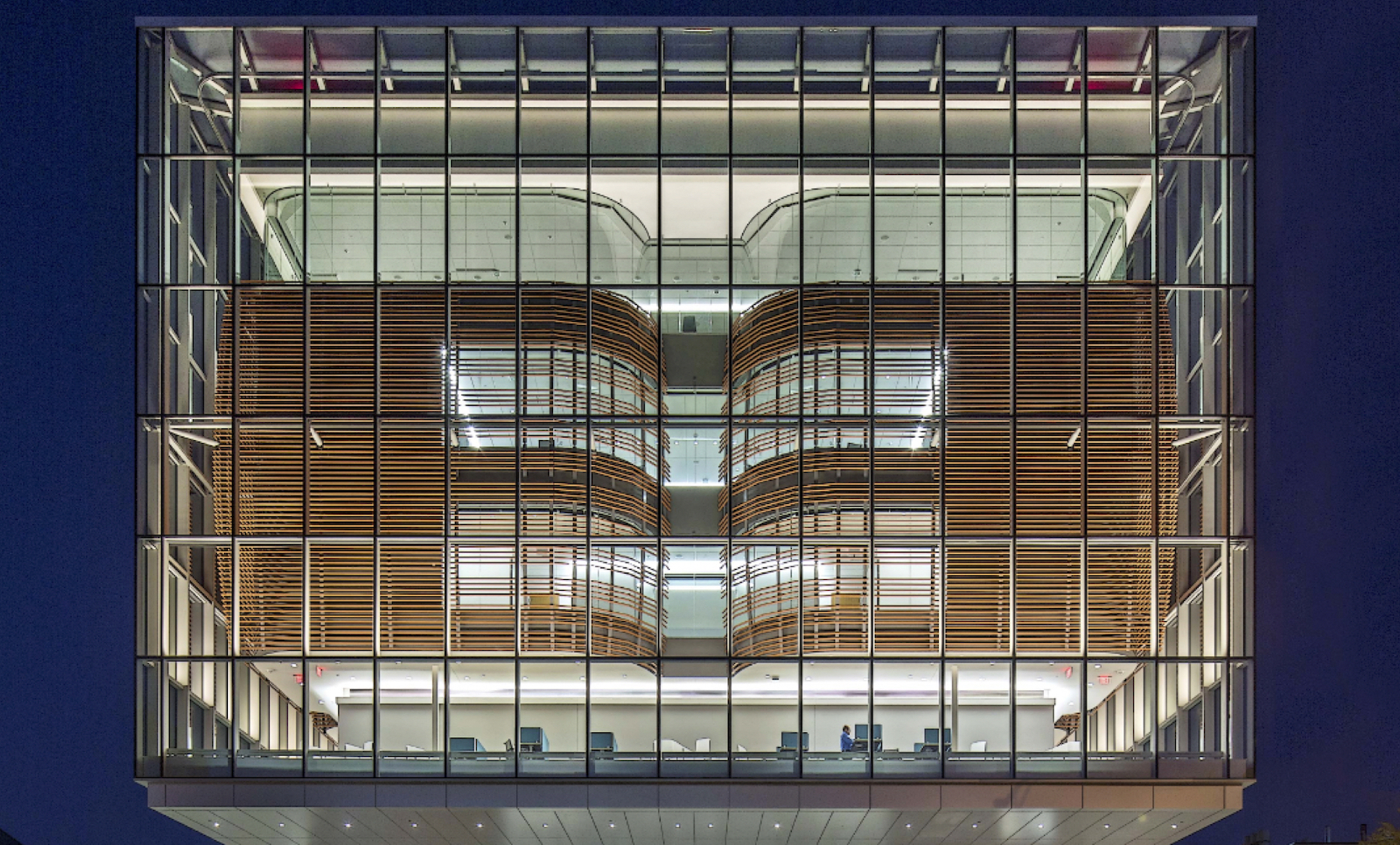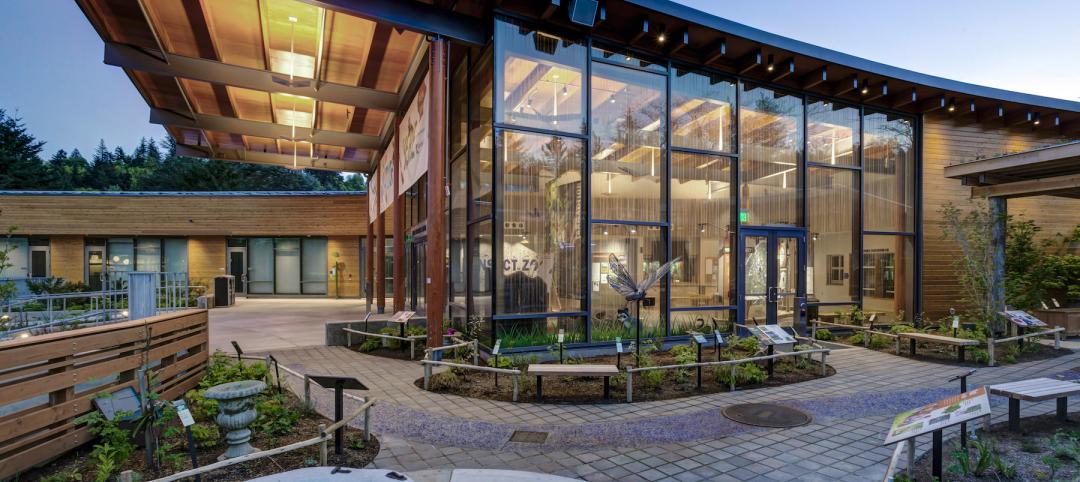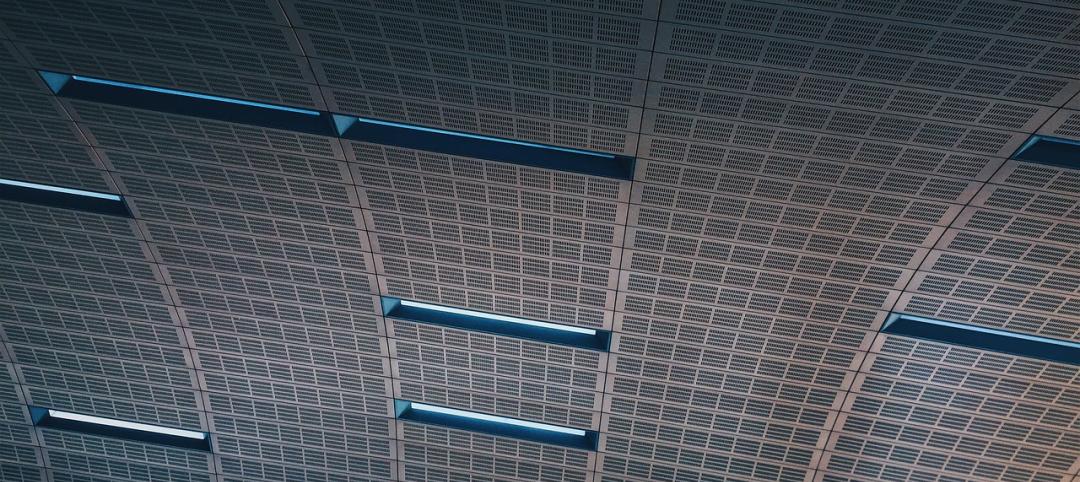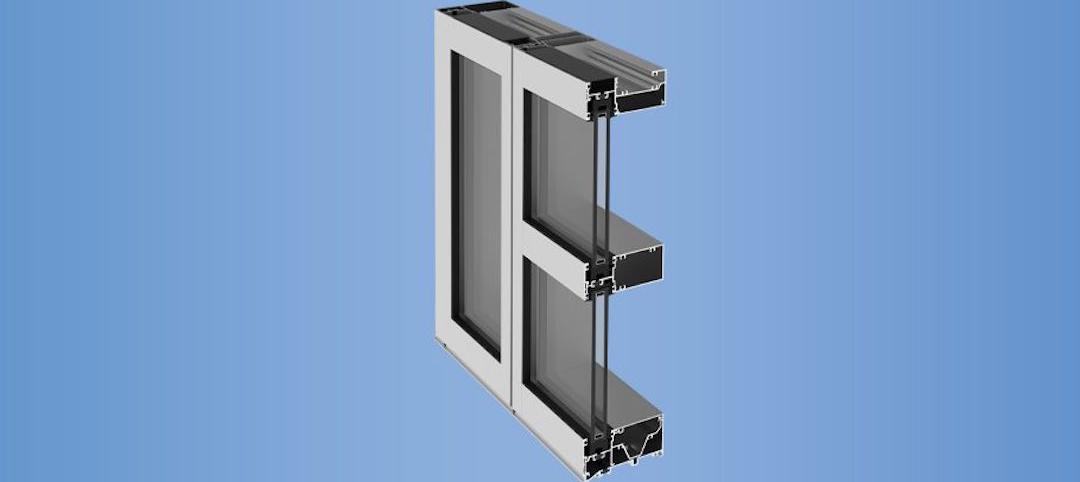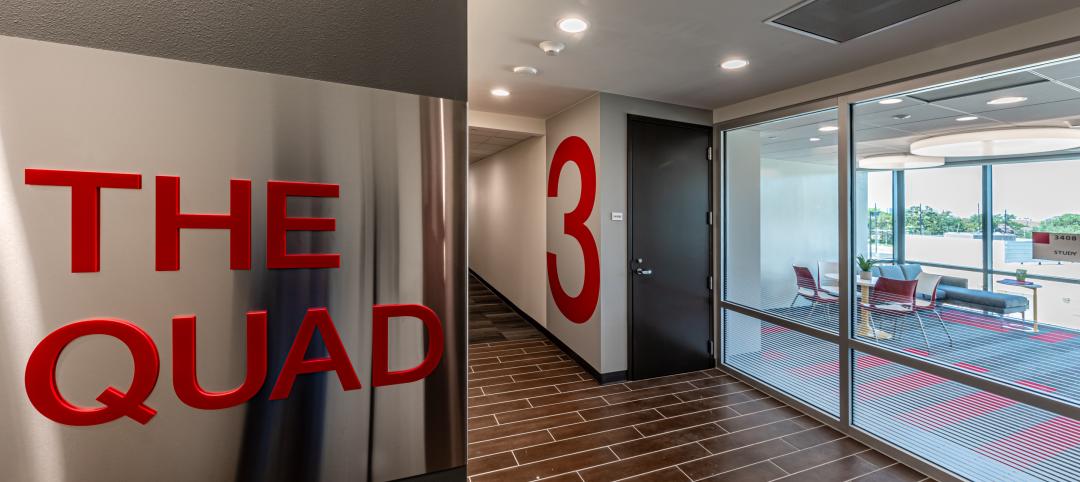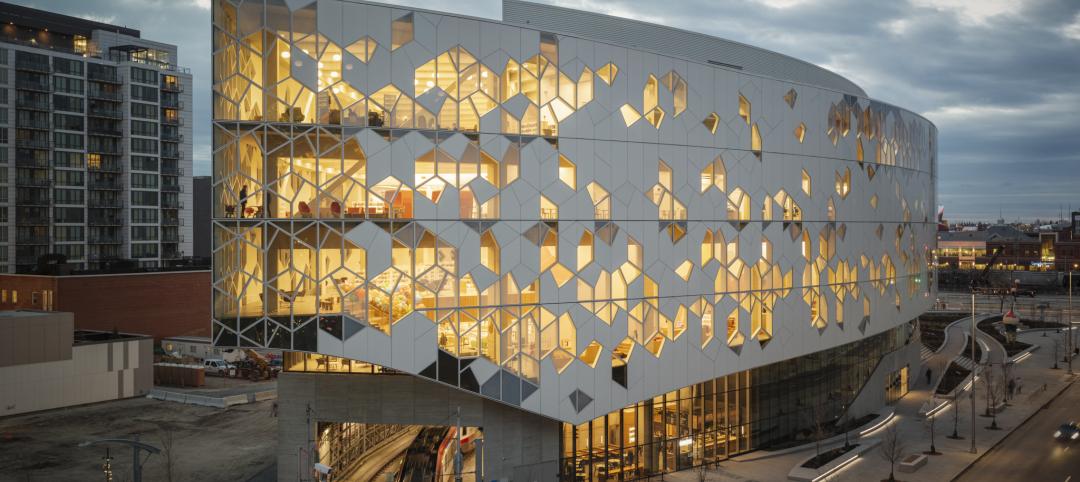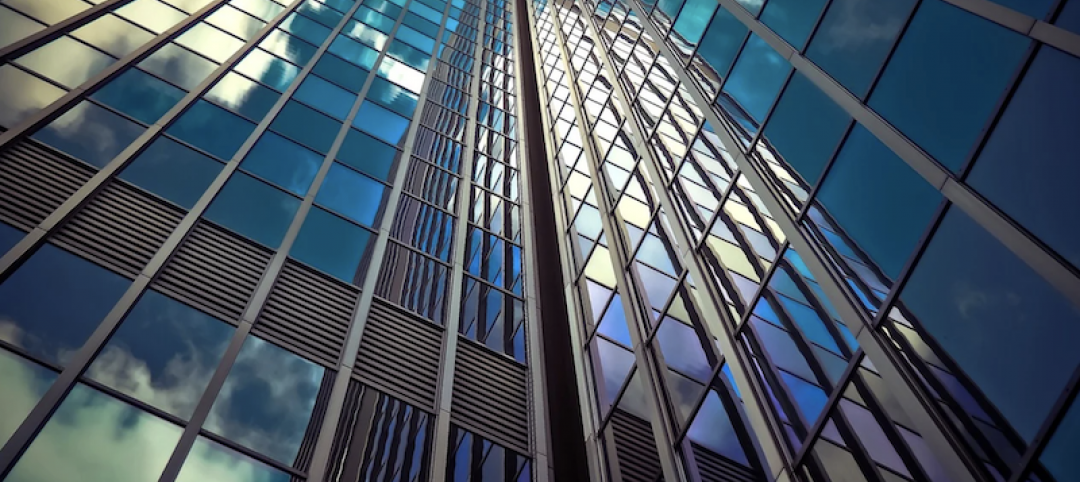Clear glass is extremely common and is popular for a variety of architectural design applications, including vision glass, spandrel glass, storefronts, entryways and other exterior uses. It is specified repeatedly due to its versatility and ability to serve as a substrate for solar control, low-emissivity (low-E) coatings. In addition to its compatibility with low-E coatings, clear glass—sometimes referred to as “clear float glass, “conventional clear glass” or “standard clear glass”—is also relatively inexpensive and is frequently selected for its neutral color.
However, when specifying glass to achieve a desired aesthetic, design professionals know that clear glass isn’t completely clear. When viewing a lite of clear glass, you may notice its slight green aesthetic, which becomes more pronounced when viewed from an angle and appears even darker at increased thicknesses or when used with low-E coatings. This can compromise design intent, especially if the goal is to create a highly transparent façade or well-lit spaces with brilliant views of the outdoors.
Iron oxide content within the glass, left over from the manufacturing process, gives clear glass its green aesthetic. Experienced design professionals are all too familiar with this undesirable attribute. However, new innovations are addressing this design challenge from both an aesthetic and budget perspective.
Low Iron and High Performance
The right glass can be the centerpiece of an amazing design concept. With its low iron content, low-iron glass significantly reduces the green hue found in clear glasses, making it ideal for distinctive exterior applications where excellent clarity is required. For reference, Acuity™ low-iron glass by Vitro Architectural Glass is 60 percent less green than ordinary clear glass.
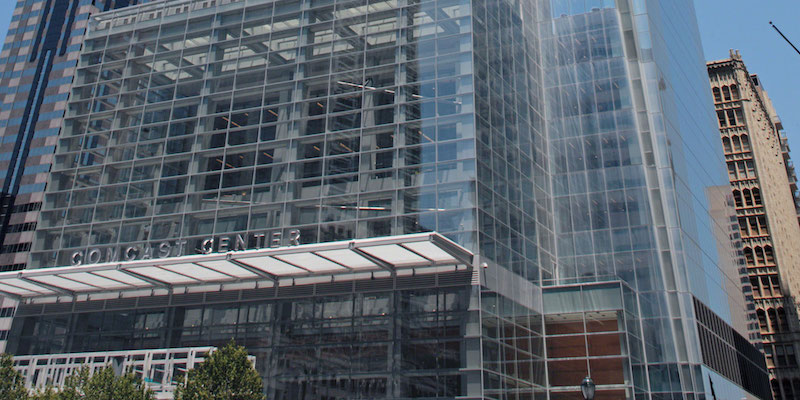
Low-iron glasses are also ideal substrates for low-E coatings, complementing the heightened clarity with outstanding energy performance. This combination allows designers to create highly transparent, high-performance exterior façades with brilliant interior views, high visible light transmittance (VLT) and true-to-life views of the outdoors.
A low-E, low-iron insulating glass unit (IGU) typically consists of an exterior lite of low-iron glass with a low-E coating applied to the interior surface and an exterior lite of uncoated low-iron glass. This configuration can be specified for everyday applications, such as office buildings and institutions, hotels, schools, condominiums and mixed-use buildings, as well as entrances and retail storefronts. Low-E, low-iron IGUs also can be leveraged for distinctive daylighting applications, such as atriums and skylights.
Cost Considerations
Fabricated glass costs are an important consideration in the façade design process. Market research indicates the installed cost of a standard glass and metal curtainwall averages $90 per square foot nationally. While the prospect of upgrading from coated clear glass to coated low-iron glass may raise budget concerns by some project stakeholders, new advances by glass manufacturers have helped bring transparent, high-performance façades within reach.
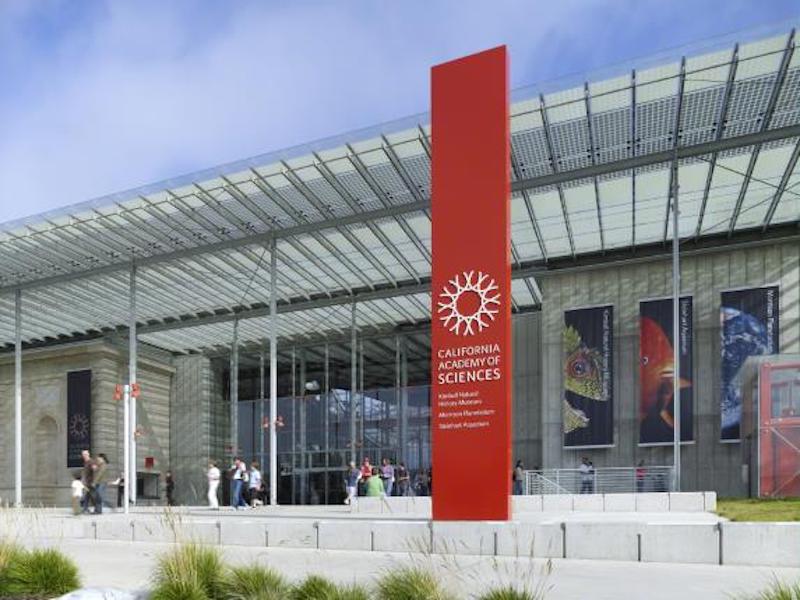
For example, upgrading a low-E-coated clear insulating glass unit to an IGU with Solarban®Acuity™ glass by Vitro Architectural Glass typically will increase the total installed curtainwall cost by only $1 to $2 per square foot. This optimization of cost, clarity and performance allows design professionals to make low-iron glass an integral focus of their façade designs.
Commercial building design is often an exercise in balance—between performance and aesthetics and budget and quality. Fortunately, options are available today that allow design professionals to avoid compromise and retain their original design intent.
Get less green, for less green
Request samples of Solarban®Acuity™ glass at vitroglazings.com/acuity. Choose from two customizable sample kits to assist with product evaluation.
Related Stories
Fire-Rated Products | Oct 21, 2021
Safti First Fights Through Assertions Made By Plaintiffs Ely Holdings Limited And Greenlite Glass Systems That Safti First’s Fire Rated Floor System Infringed On Their Patent
In a summary judgement dated February 3, 2021, Chief Magistrate Joseph C. Spero of the United States District Court for the Northern District of California ruled that the patent infringement claims filed by Ely Holdings Limited (Ely) and Greenlite Glass Systems (Greenlite) against SAFTI FIRST, a USA fire rated glass and framing manufacturer, could not proceed to trial, finding that the SAFTI FIRST’s fire resistant floor does not violate Ely’s patent.
Sponsored | Glass and Glazing | Oct 1, 2021
Specifying Responsibly to Save Birds’ Lives
Realizing sustainable, bird-friendly glass design
Sponsored | Glass and Glazing | Oct 1, 2021
Seizing the Daylight with BIPV Glass
Glass has always been an idea generator. Now, it’s also a clean energy generator.
Glass and Glazing | Sep 30, 2021
Plans move forward on Central Place Sydney, duel towers with an AI-driven façade system
SOM and Fender Katsalidis are designing the project.
Glass and Glazing | Aug 24, 2021
Smart glass innovations for smarter buildings
Researchers explore the use of ultrathin photodetectors and augmented reality thin films to expand smart building applications.
75 Top Building Products | Dec 2, 2020
Top Glass and Glazing Products for 2020
Viracon's Thermal Spacer and YKK's YWW 50 TU Thermally Broken Window Wall are among the 7 new glass and glazing products to make Building Design + Construction's 2020 75 Top Products report.
Sponsored | Glass and Glazing | Nov 12, 2020
Fire Rated Glass Makes Visual Connectivity Possible, Beautiful and Affordable at Campus Housing
Sponsored | Glass and Glazing | Oct 20, 2020
Retaining Fallingwater’s Iconic Connection Between Indoors & Outdoors
Sponsored | Glass and Glazing | Sep 29, 2020
Glass helps Calgary Central Library convey collective and community
Glass and Glazing | Sep 14, 2020
Is there really a glass box paradox?
Buildings are places which should promote the health, welfare and productivity of the people who work and live in them.


